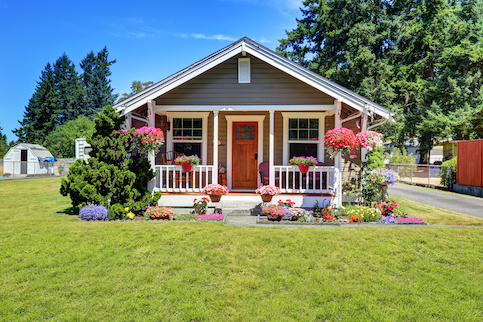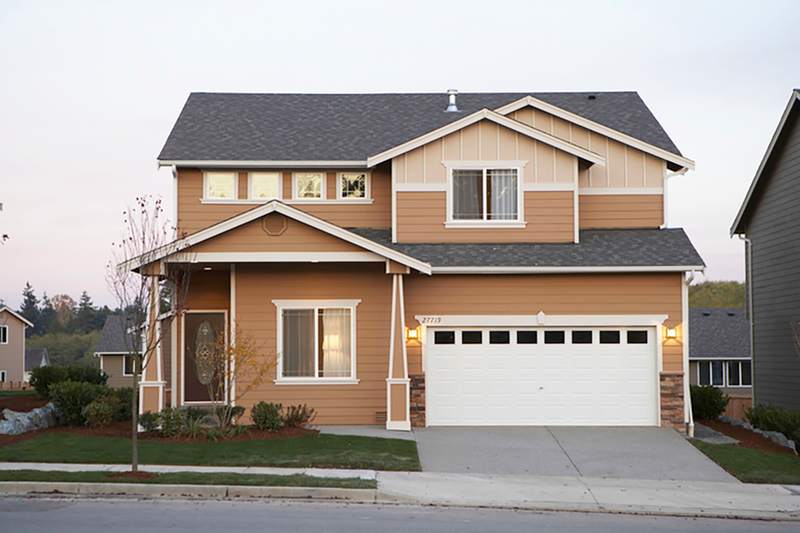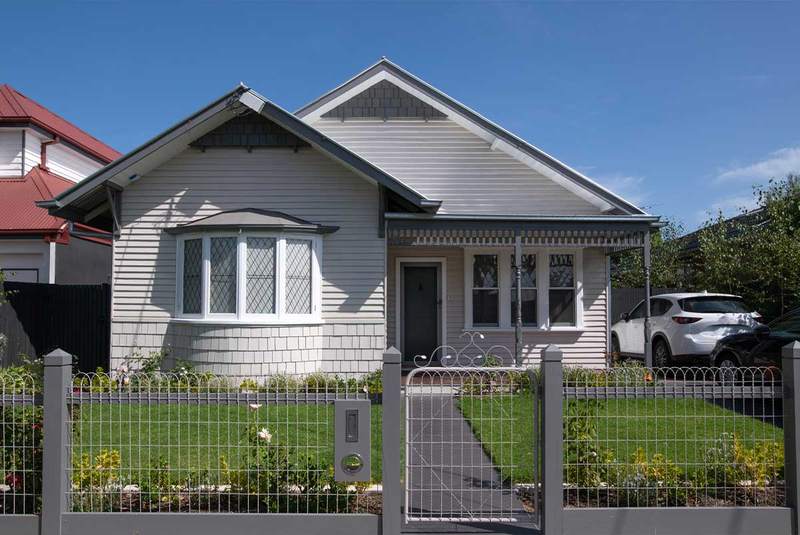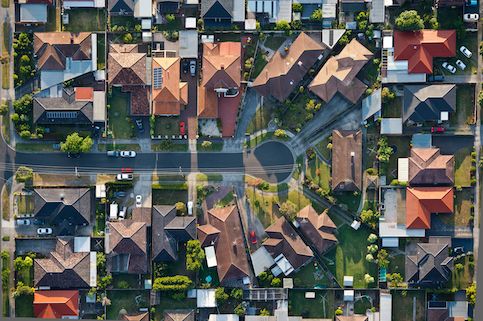Ever wonder what happened to your mortgage after closing and receiving the funds to buy a home? It may have ended up in the secondary mortgage market. In the U.S., many mortgages get sold to investors in the secondary mortgage market. When lenders sell their loans, it frees up cash they can use to issue loans to other borrowers to finance their home purchases. Without this system, buying a home would be more difficult.
Read on to learn what the secondary mortgage market is, how it works and its rewards and risks.
What Is The Secondary Mortgage Market?
The secondary mortgage market is where lenders and investors buy and sell mortgages and their servicing rights. The marketplace gives lenders a steady source of funds to finance new loans while reducing the risks of owning mortgages.
This steady circulation of money makes it easier to maintain a stable residential mortgage market.
See What You Qualify For
Buy A Home
Discover mortgage options that fit your unique financial needs.

Refinance
Refinance your mortgage to have more money for what matters.
Tap Into Equity
Use your home’s equity and unlock cash to achieve your goals.
Who Are The Major Participants In The Secondary Mortgage Market?
The key participants in the secondary mortgage market are mortgage originators, mortgage buyers, mortgage investors and homeowners.
Let’s explore the role each party plays in more detail.
Mortgage Originators
Mortgage originators, or lenders, initiate and evaluate mortgage loans. Lenders will sell mortgages on the secondary mortgage market to have more money available to originate new home loans.
Mortgage Buyers
Mortgage buyers, such as government-sponsored enterprises (GSEs) like Fannie Mae and Freddie Mac, bundle large groups of mortgages into securities and sell them to mortgage investors. When GSEs buy mortgages from lenders, it keeps money flowing for mortgage originators. GSEs also set qualifying mortgage standards, which promotes a safer system for all parties.
Mortgage Investors
Mortgage investors can include investment banks, hedge funds and pension funds. Investors typically gravitate toward the secondary mortgage market because it can provide a higher rate of return than traditional bonds and has less risk than stocks.
Homeowners
If you’re a homeowner with a mortgage, you may be a participant in the secondary mortgage market. Depending on who originated your loan, the money to fund your home purchase may come from this market.
Let’s discuss what the secondary mortgage market does and how it works in more detail.
What Does The Secondary Mortgage Market Do?
The secondary mortgage market connects home buyers, lenders and investors. This connection helps more home buyers achieve their dreams of homeownership. But what are the behind-the-scenes mechanics of the secondary mortgage market?
Here’s how your mortgage travels from the closing table to the secondary market:
1. You Take Out A Mortgage With A Lender
You apply for a mortgage, and your lender approves it. You close on the home, becoming the proud owner of a new house. After closing, your lender has less money and must wait for you to repay the loan before they can finance another home purchase.
2. The Lender Sells Your Mortgage To A Mortgage Buyer
Rather than wait on repayment, your lender can recoup their money by selling your mortgage to a GSE, like Fannie Mae, Freddie Mac or another financial institution. Now, the lender has the money they need to issue new loans.
3. Your Loan Is Managed By A Loan Servicer
Meanwhile, the management of your mortgage is handed over to a mortgage servicer. The servicer sends your monthly mortgage payment to the financial institution that owns the mortgage. Some lenders act as the servicer, while others work through a third-party servicer. Either way, a servicer keeps a percentage of a homeowner’s monthly mortgage payment as part of their management fee.
4. Your Mortgage Gets Pooled With Other Mortgages
The mortgage buyer pools your mortgage with other mortgages, creating a mortgage-backed security (MBS). The mortgage buyer then sells the security to investors, such as pension funds, mutual funds, insurance companies and banks.
5. Investors Buy The Pooled Mortgages
Investors buy shares of bundled mortgages because they’ll likely earn a steady income stream from the monthly mortgage payments in the security.
The secondary marketplace fuels the engine of homeownership. The constant flow of funds keeps the housing market balanced, stable and more accessible, benefiting investors and borrowers.
What Are The Benefits Of The Secondary Mortgage Market?
The secondary mortgage market provides many benefits to the overall housing market.
Increases Liquidity
The secondary mortgage market encourages the movement of money, which helps borrowers access the money they need to buy a home. By selling mortgages, lenders can recoup their investments and fund more loans. Selling also reduces the risks of owning individual loans while allowing lenders to generate income on fees.
Keeps Interest Rates Low
When lenders can originate mortgages and quickly sell them, they can offer longer-term fixed-rate mortgages with less concern about carrying long-term debt on their books, allowing them to keep mortgage interest rates lower.
Sets Standards For Lenders
Because GSEs are among the largest buyers of mortgages, they set the qualifying standards for the loans they’ll buy, which also helps reduce risk in the mortgage and real estate markets. If a lender wants to sell loans to a GSE, they must ensure that the loans meet their standards.
Provides Stable Income For Investors
Investors who buy mortgage-backed securities will likely receive a reliable return from the monthly mortgage payments in the securities. The consistent payments provide stability for retirees and other investors who generate income from investment funds and pensions, even when the stock market is down.
Find A Mortgage Today and Lock In Your Rate!
Get matched with a lender that will work for your financial situation.
Secondary Mortgage Market FAQs
Looking for more information about the secondary mortgage market? We have some helpful answers for you.
What’s the difference between the primary and secondary mortgage market?
In the primary mortgage market, the borrower works directly with their lender to receive financing for a home. After the borrower closes on their new home, the lender may sell the loan to a third-party investor in the secondary market.
What kind of loans aren’t sold on the secondary mortgage market?
Jumbo loans, portfolio loans and other non-conforming loans are considered higher-risk loans and are generally not sold on the secondary market. As a result, most lenders prefer to offer conventional or conforming loans to borrowers.
What kind of risk is associated with the secondary mortgage market?
The chief risk of the secondary mortgage market is widespread mortgage default, which happened during the 2008 mortgage crisis. Back then, lenders made high-risk loans to borrowers without confirming that borrowers could repay the loans, leading to soaring loan defaults and foreclosures. When too many homeowners stop making their mortgage payments, banks and other financial institutions either fail or sell their mortgages at a loss.
The effects of the crisis still reverberate, but with stricter lending standards and increased oversight enacted by government-sponsored enterprises, today, the marketplace is more stable and secure.
The Bottom Line
The secondary mortgage market is a network of borrowers, lenders, buyers and investors. It encourages the free flow and availability of money while minimizing risks for lenders and investors.
If you’re a prospective home buyer, you may soon be a participant in the secondary mortgage market.

Victoria Araj
Victoria Araj is a Staff Writer for Rocket Companies who has held roles in mortgage banking, public relations and more in her 15-plus years of experience. She has a bachelor’s degree in journalism with an emphasis in political science from Michigan State University, and a master’s degree in public administration from the University of Michigan.












